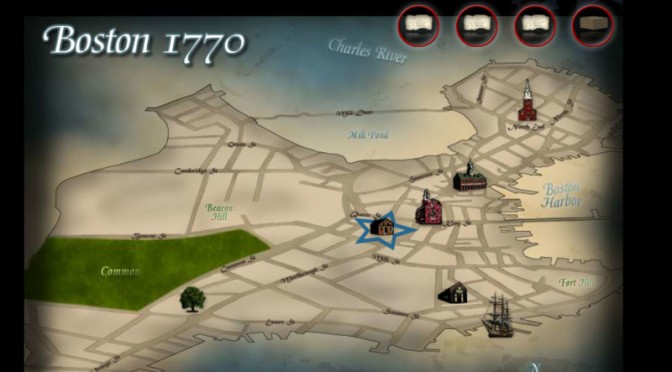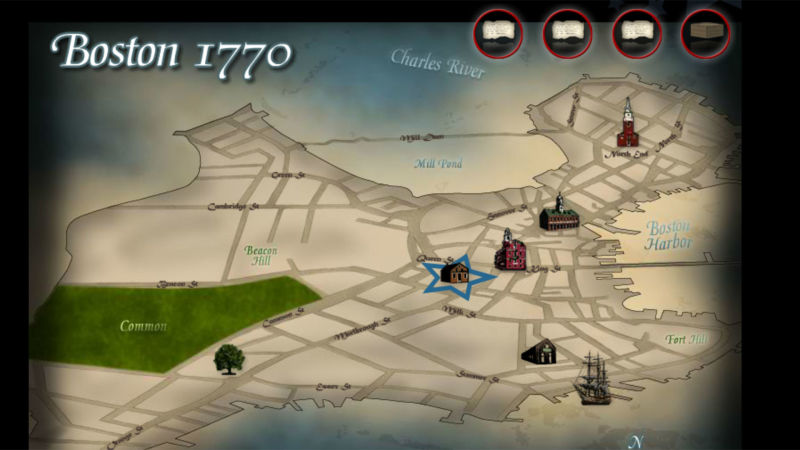Video games, social media and mobile phones play an integral role in how teens meet and interact with friends
This report explores the new contours of friendship in the digital age. It covers the results of a national survey of teens ages 13 to 17; throughout the report, the word “teens” refers to those in that age bracket, unless otherwise specified. The survey was conducted online from Sept. 25 through Oct. 9, 2014, and Feb. 10 through March 16, 2015, and 16 online and in-person focus groups with teens were conducted in April 2014 and November 2014.
For today’s teens, friendships can start digitally: 57% of teens have met a new friend online. Social media and online gameplay are the most common digital venues for meeting friends
 For American teens, making friends isn’t just confined to the school yard, playing field or neighborhood – many are making new friends online. Fully 57% of teens ages 13 to 17 have made a new friend online, with 29% of teens indicating that they have made more than five new friends in online venues. Most of these friendships stay in the digital space; only 20% of all teens have met an online friend in person.
For American teens, making friends isn’t just confined to the school yard, playing field or neighborhood – many are making new friends online. Fully 57% of teens ages 13 to 17 have made a new friend online, with 29% of teens indicating that they have made more than five new friends in online venues. Most of these friendships stay in the digital space; only 20% of all teens have met an online friend in person.
- Boys are more likely than girls to make online friends: 61% of boys compared to 52% of girls have done so.
- Older teens are also more likely than younger teens to make online friends. Some 60% of teens ages 15 to 17 have met a friend online, compared with 51% of 13- to 14-year-olds.
The most common spots for meeting friends online are social media sites like Facebook or Instagram (64% of teens who have made a friend online met someone via social media), followed by playing networked video games (36%). Girls who have met new friends online are more likely to meet them via social media (78% vs. 52% of boys), while boys are substantially more likely to meet new friends while playing games online (57% vs. 13% of girls).
Text messaging is a key component of day-to-day friend interactions: 55% of teens spend time every day texting with friends
The vast majority of teens (95%) spend time with their friends outside of school, in person, at least occasionally. But for most teens, this is not an everyday occurrence. Just 25% of teens spend time with friends in person (outside of school) on a daily basis.
 For many teens, texting is the dominant way that they communicate on a day-to-day basis with their friends. Some 88% of teens text their friends at least occasionally, and fully 55% do so daily. Along with texting, teens are incorporating a number of other devices, communication platforms and online venues into their interactions with friends, including:
For many teens, texting is the dominant way that they communicate on a day-to-day basis with their friends. Some 88% of teens text their friends at least occasionally, and fully 55% do so daily. Along with texting, teens are incorporating a number of other devices, communication platforms and online venues into their interactions with friends, including:
- Instant messaging: 79% of all teens instant message their friends; 27% do so daily.
- Social media: 72% of all teens spend time with friends via social media; 23% do so daily.
- Email: 64% of all teens use email with friends; 6% do so daily.
- Video chat: 59% of all teens video chat with their friends; 7% video chat with friends daily.
- Video games: 52% of all teens spend time with friends playing video games; 13% play with friends daily.
- Messaging apps: 42% of all teens spend time with friends on messaging apps such as Kik and WhatsApp; 14% do so every day.
Video games play a critical role in the development and maintenance of boys’ friendships
Overall, 72% of teens ages 13 to 17 play video games on a computer, game console or portable device. Fully 84% of boys play video games, significantly higher than the 59% of girls who play games. Playing video games is not necessarily a solitary activity; teens frequently play video games with others. Teen gamers play games with others in person (83%) and online (75%), and they play games with friends they know in person (89%) and friends they know only online (54%). They also play online with others who are not friends (52%). With so much game-playing with other people, video gameplay, particularly over online networks, is an important activity through which boys form and maintain friendships with others:
 Much more than for girls, boys use video games as a way to spend time and engage in day-to-day interactions with their peers and friends. These interactions occur in face-to-face settings, as well as in networked gaming environments:
Much more than for girls, boys use video games as a way to spend time and engage in day-to-day interactions with their peers and friends. These interactions occur in face-to-face settings, as well as in networked gaming environments:
- 16% of boy gamers play in person with friends on a daily or near-daily basis, and an additional 35% do so weekly. That amounts to 42% of all teen boys ages 13 to 17.
- 34% of boy gamers play over the internet with friends on a daily or near-daily basis, and another 33% do so weekly. That amounts to 55% of all teen boys ages 13 to 17.
When playing games with others online, many teen gamers (especially boys) connect with their fellow players via voice connections in order to engage in collaboration, conversation and trash-talking. Among boys who play games with others online, fully 71% use voice connections to engage with other players (this compares with just 28% of girls who play in networked environments).
 All this playing, hanging out and talking while playing games leads many teens to feel closer to friends.
All this playing, hanging out and talking while playing games leads many teens to feel closer to friends.
- 78% of teen online gamers say when they play games online it makes them feel more connected to friends they already know. That amounts to 42% of all teens ages 13 to 17.
- 52% of online-gaming teens feel more connected to other gamers (whom they do not consider friends) they play with online. That amounts to 28% of all teens ages 13 to 17.
- Gaming boys are more likely than girls to report feeling more connected to other networked gamers.
- 84% of networked-gaming boys feel more connected to friends when they play online, compared with 62% of girls.
- 56% of boy gamers feel more connected to people they play networked games with who are not friends, as do 43% of gaming girls.
Teen friendships are strengthened and challenged within social media environments
Social media also plays a critical role in introducing teens to new friends and connecting them to their existing friend networks. Some 76% of teens ages 13 to 17 use social media and:
 Social media helps teens feel more connected to their friends’ feelings and daily lives, and also offers teens a place to receive support from others during challenging times.
Social media helps teens feel more connected to their friends’ feelings and daily lives, and also offers teens a place to receive support from others during challenging times.
- 83% of teen social media users say social media makes them feel more connected to information about their friends’ lives.
- 70% of social media-using teens feel better connected to their friends’ feelings through social media.
- 68% of teen social media users have had people on the platforms supporting them through tough or challenging times.
But even as social media connects teens to friends’ feelings and experiences, the sharing that occurs on these platforms can have negative consequences. Sharing can veer into oversharing. Teens can learn about events and activities to which they weren’t invited, and the highly curated lives of teens’ social media connections can lead them to make negative comparisons with their own lives:
- 88% of teen social media users believe people share too much information about themselves on social media.
- 53% of social media-using teens have seen people posting to social media about events to which they were not invited.
- 42% of social media-using teens have had someone post things on social media about them that they cannot change or control.
- 21% of teen social media users report feeling worse about their own life because of what they see from other friends on social media.
 Teens face challenges trying to construct an appropriate and authentic online persona for multiple audiences, including adults and peers. Consequently, many teens feel obligated to project an attractive and popular image through their social media postings.
Teens face challenges trying to construct an appropriate and authentic online persona for multiple audiences, including adults and peers. Consequently, many teens feel obligated to project an attractive and popular image through their social media postings.
- 40% of teen social media users report feeling pressure to post only content that makes them look good to others.
- 39% of teens on social media say they feel pressure to post content that will be popular and get lots of comments or likes.
Some conflict teens experience is instigated online
Girls are more likely to unfriend, unfollow and block former friends
 When friendships end, many teens take steps to cut the digital web that connects them to their former friend. Girls who use social media or cellphones are more likely to prune old content and connections:
When friendships end, many teens take steps to cut the digital web that connects them to their former friend. Girls who use social media or cellphones are more likely to prune old content and connections:
- 58% of teens who use social media or cellphones have unfriended or unfollowed someone they used to be friends with, and 45% of teens have blocked an ex-friend.
- 63% of girls who use social media or cellphones have unfriended or unfollowed an ex-friend, compared with 53% of boys.
53% of social media- or cellphone-using girls have blocked someone after ending a friendship, compared with 37% of boys.
Teens spend time with their closest friends in a range of venues. Texting plays a crucial role in helping close friends stay in touch

Along with examining the general ways in which teens interact and communicate with their friends, this report documents how and where teens interact with the friends who are closest to them. These “close friend” relationships loom large in the day-to-day social activities of teens’ lives, as 59% of teens are in touch with their closest friend on a daily basis (with 41% indicating that they get in touch “many times a day”).
School is the primary place teens interact with their closest friends. However, these best-friend interactions occur across a wide range of online and offline venues:
- 83% of teens spend time with their closest friend at school.
- 58% spend time with their closest friend at someone’s house.
- 55% spend time with their closest friend online (such as on social media sites or gaming sites or servers).
 Teens also use a wide range of communication tools to get in touch with their closest friend.
Teens also use a wide range of communication tools to get in touch with their closest friend.
- 49% of teens say text messaging (including on messaging apps) is their first choice of platform for communicating with their closest friend.
- 20% say social media is their first-choice communication tool when talking with their closest friend.
- 13% say phone calls are the method they would choose first to talk with their closest friend.
- 6% say video games are their first-choice platform for talking with their closest friend.
Teens who live in lower-income households are more likely than higher-income teens to say they use social media to get in touch with their closest friend. Lower-income teens, from households earning less than $30,000 annually, are nearly evenly split in how they get in touch with these friends, with 33% saying social media is the most common way they do so and 35% saying texting is their preferred communication method. Higher-income teens from families earning $30,000 or more per year are most likely to report texting as their preferred mode when communicating with their closest friend. Modestly lower levels of smartphone and basic phone use among lower-income teens may be driving some in this group to connect with their friends using platforms or methods accessible on desktop computers.
Smartphone users have different practices for communicating with close friends
Nearly three-quarters (73%) of teens have access to a smartphone, and smartphone-using teens have different practices for communicating with close friends. Teens with smartphones rely more heavily on texting, while teens without smartphones are more likely to say social media and phone calls are preferred modes for reaching their closest friend.
Girls are more likely to use text messaging – while boys are more likely to use video games – as conduits for conversations with friends
 Compared with boys, girls tend to communicate more often with friends via texting and instant messaging:
Compared with boys, girls tend to communicate more often with friends via texting and instant messaging:
- 62% of girls spend time with friends every day via text messaging, compared with 48% of boys.
- 32% of girls spend time with friends every day using instant messaging, compared with 23% of boys.
On the other hand, boys are much more likely than girls to interact and spend time with friends while playing video games:
- 74% of teen boys talk with friends while playing video games together, while 31% of girls report the same.
- 22% of boys talk daily with friends while playing video games, compared with just 3% of girls.
Phone calls are less common early in a friendship, but are an important way that teens talk with their closest friends
Some 85% of teens say they spend time with friends by calling them on the phone, and 19% do so every day. The perceived intimacy of the phone call as a communication choice means teens are less likely to use it immediately upon meeting a new friend, but they often prefer it when talking to close friends.
- About half of teens (52%) indicate that a phone number for calling is one of the first three things they would share with a new friend, but just 9% indicate that this is the first thing they would share.
- And when teens want to talk to their closest friend, phone calls are the second most popular method overall, with 69% of teens citing phone calls as one of their three choices.
84% of black teens say phone calls are one of the three most common methods they use to get in touch with close friends, compared with 69% of whites and 63% of Hispanic teens.






You must be logged in to post a comment.